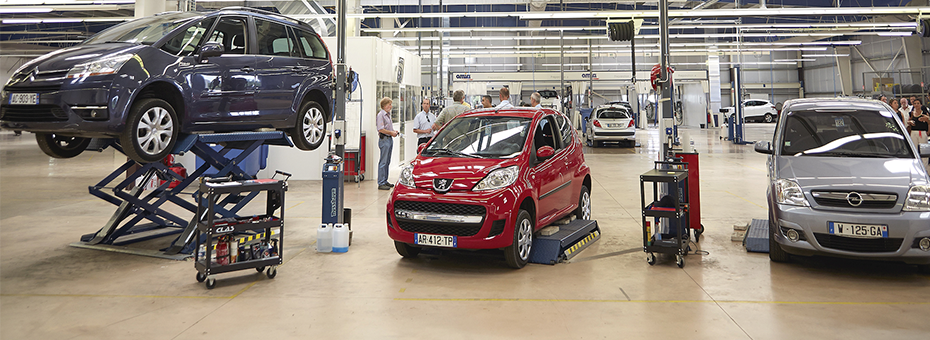I was doing my monthly gemba walk in our refurbishing factory in Donzere recently.
Again, I felt that gemba magic!
Rémi, the factory manager, and I were discussing getting quality right every time. On a recent visit to the shop floor, the workers had set up a specific board to monitor quality across the facility. We were there to review the main quality KPIs, and check their evolution – from final customer satisfaction to quality defects at each step of the process.
Rémi showed me that even though overall quality was improving, we still had a serious issue at the “appraisal” step. Appraisal is one of the first steps of the process, where the cars are thoroughly inspected to find and frame what needs to be refurbished or repaired. Getting it wrong at this step can mean that you clear the car to go into the work process without full information about how much work or what parts are really needed – which leads to flow issues. 66% of our quality problems originate there. Rémi explained how they were looking into this challenge and the ideas they had formulated to fix it.
But I was not sure that the problem was really a quality problem. I had another hypothesis.
So we went to the appraisal gemba to chat with the team leader.
The team leader explained me how they looked at quality at appraisal. They were fully aware of the many problems that were triggered there, and had examined this topic in further depth as a team. Every morning the team leader would present every quality issue from the previous day, and share what went wrong on a case by case basis.
Every week would have a specific focus. This week was brake discs: they displayed photos of flawed discs to increase awareness.
But for all that, the quality was not improving. In fact, the team leader acknowledged that while brake discs would improve this week, within a few weeks the same problems would reappear.
Refocusing on the basics, I asked the team leader: How do you engage your team with 5S? What is the last change you have done? Where is the kaizen? How are you driving the team to do kaizen? On what are you working on to improve the working conditions of the team? Is there an andon? How many times a day is it pulled?
I just couldn’t really see how all this was working, and the answers felt to me…rather vague.
I asked Rémi if he saw something wrong with that team. He suggested that we were looking for results without first managing the conditions. He ruefully agreed that although the team leader was fully motivated and the team was working hard at it, they were probably barking up the wrong tree – as a plant manager, he recognized he had not oriented them as well as he could have.
As we were once taught by Isao Yoshino: first manage the conditions.
Rémi understood that I was looking at how the team leader was working with the TPS. And he agreed that practicing TPS better would in all likelihood deliver higher quality.
My hypothesis was that this was not a quality problem, but a leadership problem.
Within a few minutes on the gemba allowed Rémi and I agreed on a different outlook on a recurring issue. We’d changed our working hypothesis from driving current actions harder to looking at orienting better the team leader towards TPS practice.
This is our role as leader: to orient our people on the right problems.
And of course, the first person to blame for this misstep is… me. For months now, I’ve been asking Rémi to show me the evolution of his quality KPIs, but never taking the time to discuss with him the difference between managing spot causes at team leader level, and conditions at his, to give them both a higher chance of success.
This is our role as leader: to orient our people on the right problems. The gemba allows us to see if they are indeed focusing on the right problems…and yet we cannot forget that the gemba is also a powerful force challenging us as leaders to reflect on whether we are doing our job well. In this case both Rémi and I learned that we were wrong!
Building a Lean Operating and Management System
Gain the in-depth understanding of lean principles, thinking, and practices.



